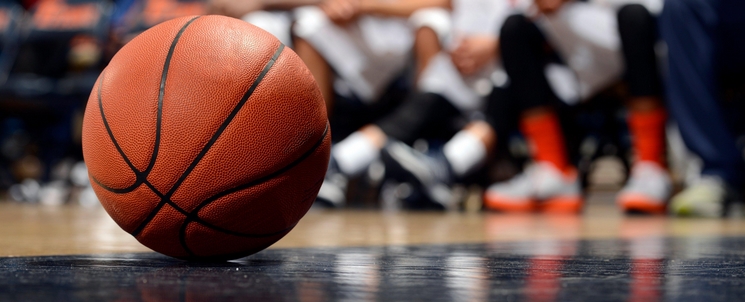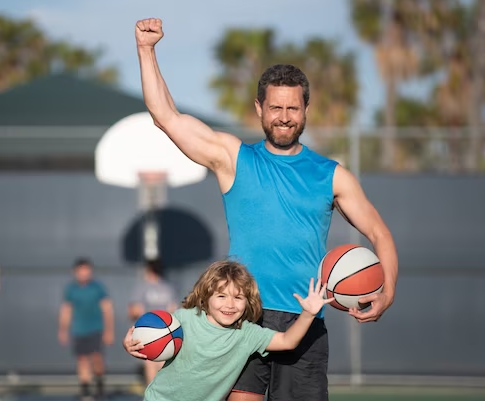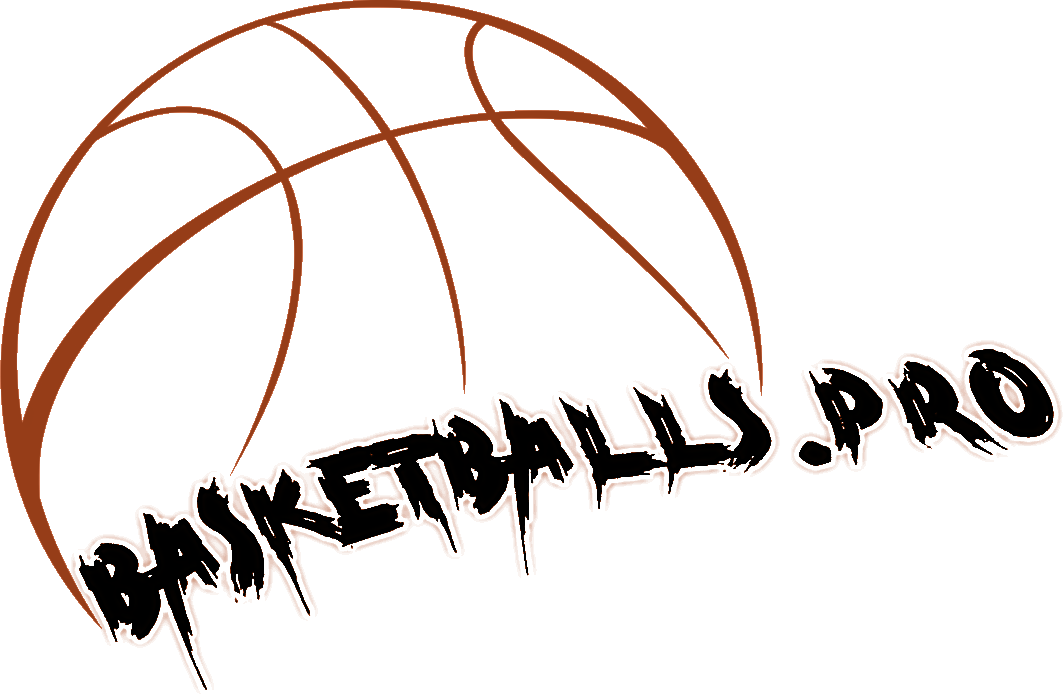Wondering which basketball size is right for you or your child? Picking the correct ball size isn’t just about comfort; it’s crucial for developing proper handling and shooting skills that is hard to change in later years. Here I’m going to help you choosing a proper ball.
What is the Normal Size of Basketball Ball?
The standard size for a men’s basketball is Size 7 with a circumference of 29.5 inches (75 cm). For women’s basketball, it’s Size 6 with a circumference of 28.5 inches (72 cm).

The Importance of Using Properly Sized Balls for Young Players
When it comes to youth basketball, the size of the ball can significantly impact a young player’s development and enjoyment of the game. Here’s why using the right-sized basketball is essential for kids as they grow and later upgrade to larger balls.
1. Enhances Skill Development
Using a basketball that fits a child’s hand size allows for better control, making it easier to learn and execute fundamental skills such as dribbling, passing, and shooting. A smaller ball is proportionate to a child’s physical capabilities, ensuring they can properly grip and maneuver the ball.
2. Promotes Correct Technique
A ball that matches a player’s size encourages the development of proper playing techniques. Oversized basketballs can lead to poor shooting form and dribbling habits as young players may struggle to use the correct hand positions and body mechanics.
3. Builds Confidence
Children feel more successful when they can easily handle the basketball. This success helps build their confidence, which is crucial for enjoying the game and staying motivated to improve.
4. Prevents Injury
A heavier, larger ball can be a strain on young muscles and joints. Using an appropriate-sized ball reduces the risk of sports-related injuries like strains or sprains as it requires less force to move and control.
5. Facilitates Smooth Transition to Larger Balls
As children grow, their physical and skill capacities expand. Graduating to a larger basketball becomes a natural step rather than a hurdle. This progression helps in adjusting their skills gradually to match the increased demands of the larger ball, such as weight and handling difficulty.
Choosing the right basketball size isn’t just about comfort—it’s a crucial factor in developing a young player’s basketball skills, technique, and love for the game. As children grow, they can move to larger basketballs, ensuring their continued development and enjoyment.
Ensuring that young players start with the right equipment sets a solid foundation for their future in basketball, allowing them to learn, grow, and succeed in the sport.
Basketball Ball Size Chart
Here’s a table summarizing the different basketball ball sizes:
| Category | Size | Circumference | Weight | Best Suited For |
|---|---|---|---|---|
| Men’s Professional | 7 | 29.5 inches (75 cm) | 22 oz (620 g) | Men and boys ages 15 and up |
| Women’s Professional | 6 | 28.5 inches (72 cm) | 20 oz (570 g) | Women and girls ages 12 and up |
| Intermediate | 6 | 28.5 inches (72 cm) | 20 oz (570 g) | Boys ages 12-14 |
| Junior | 5 | 27.5 inches (70 cm) | 17 oz (480 g) | Children ages 9-11 |
| Mini | 3 | 22 inches (56 cm) | 10 oz (280 g) | Young children |
| Micro Mini | 1 | 16 inches (40.6 cm) | 8 oz (227 g) | Very young children, promotional purposes, or souvenirs |
I can’t stress this enough: it’s very important for kids to use the correct ball size as using too big ball may even lead to the conclusion that the kid will not like basketball at all as they will feel weak and that they can’t play it.

Which Basketball Ball Size to Choose
Size 7 (Men’s Official Size):
- Circumference: 29.5 inches
- Weight: 22 ounces
- Recommended for professional men’s basketball games and advanced players.
Size 6 (Women’s Official Size):
- Circumference: 28.5 inches
- Weight: 20 ounces
- Ideal for women’s professional basketball and experienced female players.
Size 5 (Youth, ages 12-14):
- Circumference: 27.5 inches
- Weight: 17 ounces
- Suitable for youth players transitioning to a standard-sized ball.
Size 4 (Youth, ages 8-11):
- Circumference: 25.5 inches
- Weight: 14 ounces
- Designed to help younger players develop proper ball-handling skills.
Size 3 (Mini, ages 5-8):
- Circumference: 22.0 inches
- Weight: 10 ounces
- Perfect for the youngest players learning the fundamentals of the game.
FAQs
Selecting the right basketball size is crucial for both comfort and skill development. Here are some focused FAQs on the size aspect of basketballs that cover essential and intriguing questions.
Why are there different basketball sizes for different age groups?
- Different sizes cater to the physical development and capabilities of players as they grow. Smaller basketballs for younger players facilitate easier handling and skill development, while larger balls prepare older and more physically mature players for standard competitive play.
Is there any advantage to practicing with a basketball that’s larger or smaller than the regulation size?
- Practicing with a smaller ball can improve hand-eye coordination and fine-tune dribbling skills due to its demand for more precise control. Conversely, occasionally using a larger ball can strengthen hand muscles and challenge a player to adapt their techniques, though it’s not recommended for extended use.
Can a team use a different size ball than the official league size during practice?
- Teams often practice with regulation-sized balls to simulate real-game conditions. However, coaches might occasionally incorporate different-sized balls in drills to focus on specific skill enhancements.
What size basketball should a 13-year-old use if they are particularly tall for their age?
- While age and standard sizes are guidelines, individual physical development should also be considered. If a 13-year-old is significantly taller and has larger hands, transitioning to a Size 7 might be beneficial, especially if it improves their comfort and control during play.
Do professional players ever use non-regulation size basketballs in training?
- Yes, some professional players use smaller or weighted basketballs during individual training sessions to develop specific skills, such as dribbling precision or shooting strength.
How often should I evaluate if the basketball size is still appropriate as children grow?
- It’s a good idea to re-evaluate basketball size at least once a year or at the start of every season, as children’s growth can be rapid and might necessitate a change in ball size sooner than expected.
Should a player use the same size basketball at home as they do in official games?
- To ensure consistency in training and game performance, it’s advisable to use the same size basketball at home that is used in official games. This helps in maintaining skill accuracy and game-readiness.
Is there a benefit to using an international size basketball if I’m training in the U.S.?
- International basketball sizes are generally consistent with U.S. sizes, but training with an FIBA-approved ball (which might have slight variations in material and grip) can be beneficial if you plan to compete or play internationally.
For mixed-age training sessions, what size basketball should be used?
- In mixed-age training sessions, coaches often opt for a size that meets in the middle of the age range present, or they might use multiple ball sizes to cater individually to different groups within the session.
What are the considerations for choosing basketball size in women’s leagues?
- Women’s leagues typically use a size 6 basketball to accommodate generally smaller hand sizes compared to men. This size is used universally across all women’s leagues to standardize play and equipment.
How do different brands size their basketballs, and does it matter?
- While brands adhere to the general sizing guidelines (sizes 3 to 7), some variation in texture and firmness can occur. It’s important to choose brands that comply with league regulations for uniformity in play.
What should I do if my child finds the recommended size too large or small?
- If the recommended size doesn’t fit your child’s needs, it’s okay to choose a size that better suits their current skill and comfort level, gradually transitioning to the standard size as they grow and develop.
Can using a ball too big or too small create bad playing habits?
- Yes, using a ball that is not appropriately sized can lead to the development of poor handling skills and incorrect shooting techniques. It’s crucial to use a size-appropriate ball to foster correct playing habits from the start.
Interesting articles:
